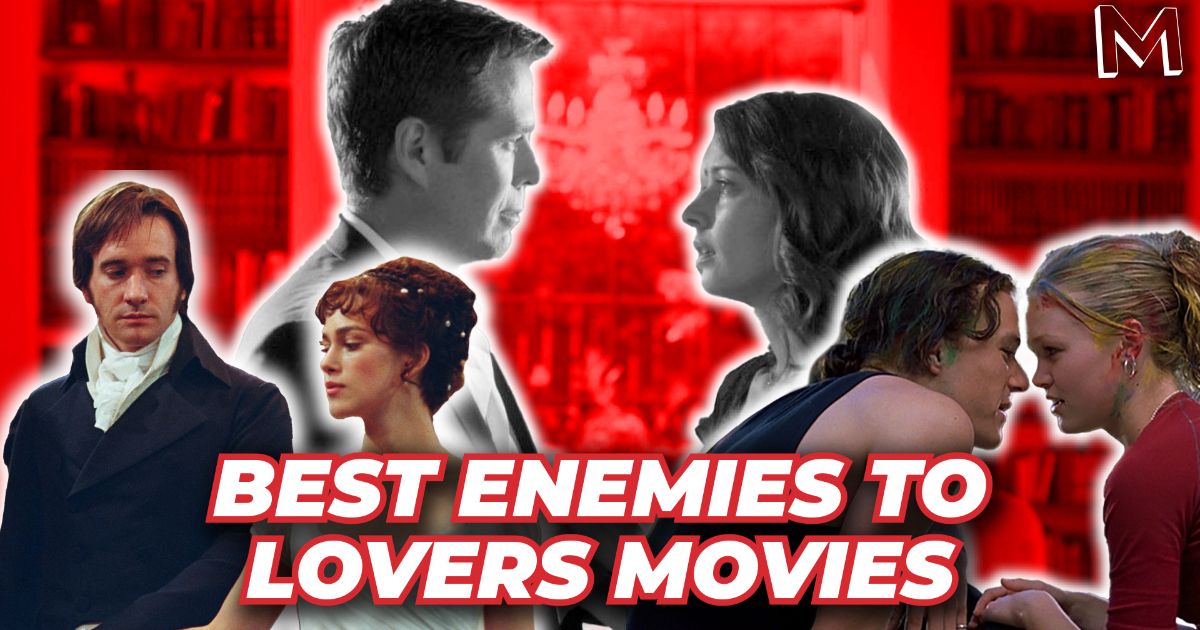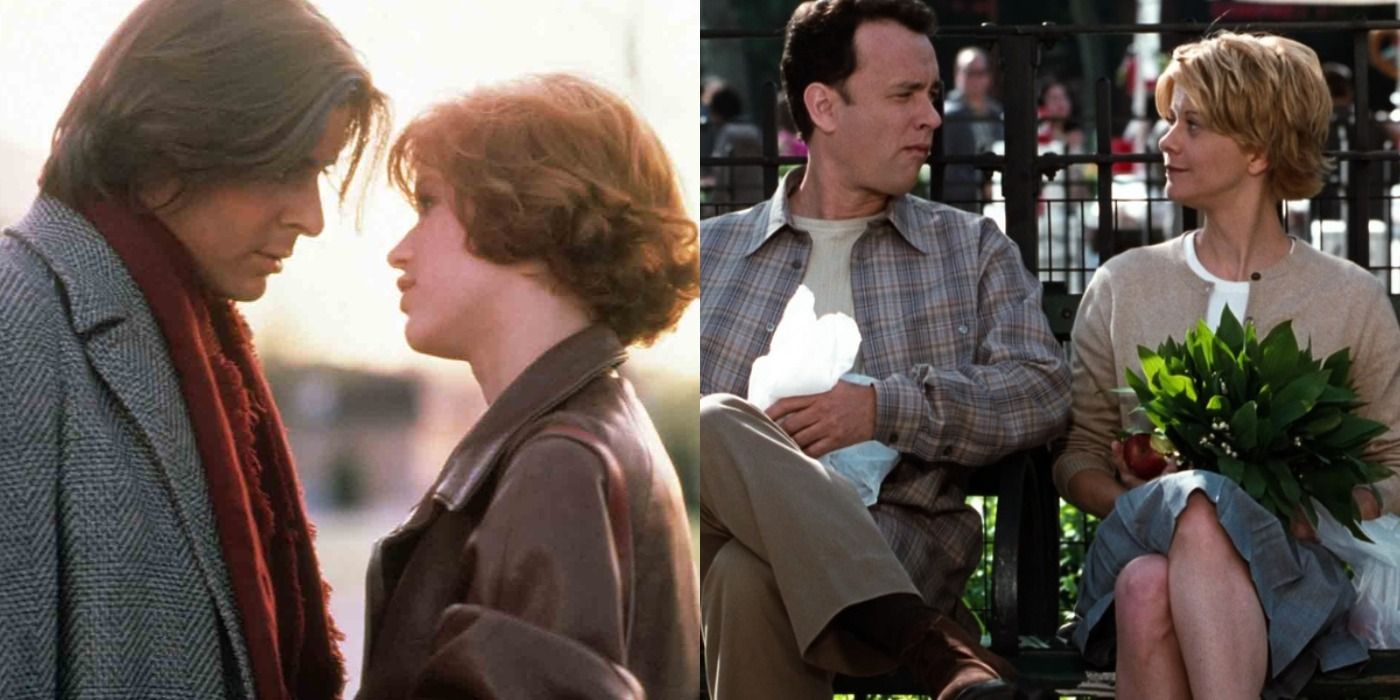Hey there, fellow romantics and binge-watchers! If you're diving into the world of Netflix, you've probably stumbled upon something that’s been making waves: Enemies to Lovers Netflix. It’s like a modern-day fairytale where the villains turn into heroes—or at least into love interests. Now, let’s be real for a second: who doesn’t love a good enemies-to-lovers trope? It’s got drama, tension, and that slow-burn romance we all secretly crave in our lives. So buckle up because we’re about to deep-dive into this electrifying phenomenon.
You know the drill: two people can’t stand each other, they fight like cats and dogs, and then BAM—they fall head over heels. It’s like watching a train wreck but in the best possible way. Netflix has been serving us this delicious blend of hate and love on a silver platter, and we’re here for it. Whether it's in movies or series, this trope never gets old.
But what makes Enemies to Lovers Netflix so special? Is it just the storyline, or is there something deeper that resonates with us? Stick around because we’re going to break it down piece by piece, from why it’s such a hit to how it reflects real-life relationships. Trust me, it’s going to be a wild ride!
Read also:John Gottis Kids
Table of Contents
- What is Enemies to Lovers?
- Top Netflix Series with Enemies to Lovers Trope
- Why Does This Trope Work?
- The Psychological Perspective
- Romantic Movies with This Theme
- Real-Life Examples of Enemies Turning Lovers
- How to Apply This Trope in Real Life
- Criticism and Controversy
- Future Trends in Netflix Content
- Conclusion and Final Thoughts
What is Enemies to Lovers?
Alright, let’s start with the basics. The Enemies to Lovers trope is basically a narrative device where two characters who initially dislike or even despise each other eventually fall in love. It’s like watching a rollercoaster ride filled with witty banter, unexpected twists, and those heart-pounding moments when they finally realize their feelings. Netflix has mastered this art by incorporating it into some of its most successful shows and movies.
This trope isn’t new; it’s been around since Shakespearean times, but Netflix has brought it back with a bang. It taps into our primal desire for conflict resolution and emotional catharsis. Who doesn’t want to see two stubborn people finally admit their feelings after months—or even years—of denying it?
Why It’s So Popular
One of the reasons Enemies to Lovers Netflix is so popular is because it mirrors real-life relationships. Think about it: how many times have you met someone you didn’t like at first, only to later discover they were actually amazing? It’s relatable, and that’s what makes it so compelling.
Top Netflix Series with Enemies to Lovers Trope
Netflix has a treasure trove of series that nail this trope. Let’s take a look at some of the best ones:
- Bridgerton: This Regency-era drama is a prime example of enemies-to-lovers done right. Simon and Daphne start off on the wrong foot, but their chemistry is undeniable.
- You: Okay, this one’s a bit darker, but Joe and Beck’s relationship starts with a lot of tension before spiraling into obsession. Not exactly healthy, but undeniably captivating.
- Emily in Paris: While not as intense as others, Emily and her coworkers have plenty of clashes before forming bonds—or maybe more.
These shows prove that whether it’s historical drama, psychological thriller, or modern-day comedy, the enemies-to-lovers trope can work in any genre.
Why These Shows Work
Each of these series uses the trope differently, but they all share one thing in common: strong character development. Characters need to evolve, and their transformation from enemies to lovers should feel earned, not forced. That’s what keeps viewers hooked.
Read also:Prince Felix Of Denmark
Why Does This Trope Work?
Let’s get down to the nitty-gritty. Why does the Enemies to Lovers Netflix trope work so well? There are a few reasons:
- Conflict Creates Chemistry: When two characters argue, it creates tension, and tension leads to attraction. It’s a classic formula that works every time.
- Relatability: As mentioned earlier, this trope reflects real-life experiences. We’ve all been there, right?
- Emotional Investment: Watching characters overcome their differences and fall in love is emotionally satisfying. It gives us hope for our own relationships.
It’s like a perfect storm of drama, romance, and character growth. Who wouldn’t want to watch that?
The Psychological Perspective
From a psychological standpoint, the enemies-to-lovers trope makes sense. Humans are naturally drawn to conflict resolution, and seeing characters reconcile their differences taps into our innate desire for harmony. Additionally, the initial dislike often stems from misunderstandings or miscommunication, which are common in real-life relationships.
Research shows that opposites can attract, especially when those differences complement each other. For example, a fiery, independent woman might find herself drawn to a calm, nurturing man—or vice versa. It’s all about balance.
How Our Brains React
Our brains love stories with clear arcs, and the enemies-to-lovers trope provides just that. It’s a journey from dislike to love, and our brains are wired to enjoy narratives with a satisfying conclusion. Plus, the anticipation of when the characters will finally admit their feelings keeps us on the edge of our seats.
Romantic Movies with This Theme
Netflix isn’t the only platform embracing this trope. There are plenty of romantic movies that have made it famous. Here are a few examples:
- Love Actually: Mark and Juliet have a rocky start, but their love story is one of the most iconic in cinema history.
- Pretty Woman: Edward and Vivian come from completely different worlds, but their chemistry is undeniable.
- The Proposal: Margaret and Andrew start off as boss and employee, but their relationship evolves into something much deeper.
These movies prove that the enemies-to-lovers trope isn’t limited to TV shows. It works just as well on the big screen.
What Makes These Movies Stand Out
Great writing, strong performances, and relatable characters are key to making these movies stand out. Audiences need to believe in the transformation from enemies to lovers, and these films deliver in spades.
Real-Life Examples of Enemies Turning Lovers
Believe it or not, this trope isn’t just confined to fiction. There are plenty of real-life examples of enemies turning into lovers. Take Mark Zuckerberg and Priscilla Chan, for instance. They reportedly didn’t hit it off at first, but now they’re one of the most successful couples in Silicon Valley.
Another example is Brad Pitt and Jennifer Aniston. While their relationship wasn’t exactly an enemies-to-lovers scenario, they did start off as friends who eventually fell in love. It just goes to show that anything is possible.
Lessons We Can Learn
These real-life stories teach us that first impressions aren’t always accurate. People can change, and relationships can evolve in unexpected ways. It’s all about keeping an open mind and being willing to see the good in others.
How to Apply This Trope in Real Life
So, how can you apply the enemies-to-lovers trope in your own life? Here are a few tips:
- Give People a Chance: Don’t judge someone based on your initial impression. People are complex, and you might be surprised by what you discover.
- Communicate Openly: Misunderstandings often lead to conflict, so clear communication is key to resolving issues.
- Focus on Strengths: Instead of focusing on someone’s flaws, try to see their positive qualities. You might find that you have more in common than you thought.
Remember, relationships take time and effort. Don’t rush things, but don’t be afraid to take a chance either.
Criticism and Controversy
Of course, not everyone is a fan of the Enemies to Lovers Netflix trope. Some critics argue that it perpetuates unhealthy relationship dynamics, especially when it involves stalking or manipulation. Others feel that it’s overused and lacks originality.
While these criticisms have merit, it’s important to remember that the trope can be executed in a healthy and realistic way. It’s all about balance and context.
Addressing Concerns
Netflix has started addressing these concerns by focusing on consent and mutual respect in their storytelling. Shows like Bridgerton and Emily in Paris prioritize character agency and emotional intelligence, which helps mitigate some of the trope’s negative connotations.
Future Trends in Netflix Content
Looking ahead, it’s clear that Netflix will continue to embrace the enemies-to-lovers trope. However, we can expect to see more diverse and inclusive representations. For example, LGBTQ+ relationships and cross-cultural romances are becoming increasingly popular, and Netflix is leading the charge.
Additionally, we might see more experimental takes on the trope, such as blending it with sci-fi or fantasy elements. The possibilities are endless!
What to Expect
Expect more complex characters, richer storylines, and a focus on emotional authenticity. Netflix knows what its audience wants, and they’re not afraid to push boundaries to deliver it.
Conclusion and Final Thoughts
And there you have it, folks! The Enemies to Lovers Netflix phenomenon in all its glory. Whether you’re a die-hard fan or a casual viewer, there’s no denying its appeal. It’s a timeless trope that continues to captivate audiences worldwide.
So, the next time you find yourself watching a Netflix show or movie with this trope, remember why it works. It’s not just about the drama or the romance; it’s about the journey and the transformation. And who knows? Maybe you’ll find your own enemies-to-lovers story in real life.
Now, it’s your turn! Drop a comment below and let me know your favorite enemies-to-lovers Netflix series or movie. And don’t forget to share this article with your friends. Happy binge-watching, and may all your enemies eventually become your lovers—or at least your friends!


